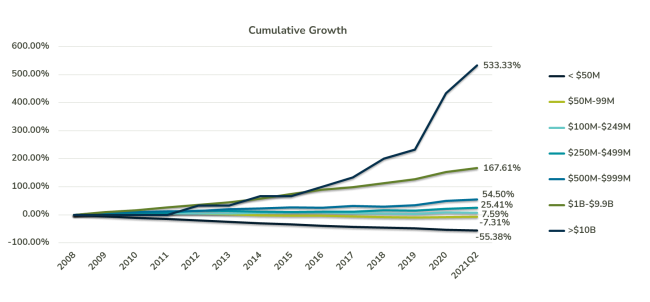 Source: Shutterstock.
Source: Shutterstock.
Merger and acquisition activity is ramping up as industry leaders focus on increasing scale to weather depressed net interest margins at the same time as seeking ways to enhance convenient distribution channels, diversify geographic presence and retain/obtain talented employees.
According to S&P Global, U.S. bank M&A activity continued through August at an accelerated pace with 20 new deals, bringing 2021's year-to-date deal announcements to 132, compared to 103 for all of 2020. Credit union merger activity has also increased with the NCUA approving 74 mergers in the first half of 2021, compared to 67 consolidations in the first half of 2020.
Recommended For You
Even leaders who may have shied away from mergers previously are taking note of the current trends and rethinking partnerships. Boards of directors and executive teams have vital roles to play in setting the strategy for their institutions and proactively planning for long-term, sustainable growth. This starts with evaluating the options available, including potential mergers and acquisitions.
National Credit Union Consolidation
 Source: SNL Financial
Source: SNL Financial National Credit Union & Bank Trends

 Source: SNL Financial
Source: SNL Financial Whether you look at the distribution by assets, members or average growth rates, both credit unions and banks continue to see consolidation, with larger institutions on an accelerated growth trajectory than their smaller counterparts in recent years.
Lower Valuations = More Opportunities
Although valuations in the bank space are trending higher, they are still generally below pre-COVID levels. These lower bank valuations strongly correlate to lower valuations in credit union mergers. This unique dynamic may offer the opportunity for lower intangible values, which could reduce future amortization (impairment) expenses.
Bank Multiples Trend
 Source: SNL Financial, ALM First Analysis
Source: SNL Financial, ALM First Analysis As more credit unions consider ways to partner as opposed to compete, merger activity is poised to expand as leaders pursue new opportunities with like-minded institutions to achieve their strategic objectives at an accelerated pace.
COVID has also opened the eyes of many regarding remote work. Mergers can expand your target search profile and offer the ability to retain and attract talent in various geographic marketplaces.
Credit Union Distribution by Size
As the charts below demonstrate, rising regulatory/compliance burdens, low net interest margins, low operating efficiencies and rising competitive landscapes are continuing to put pressure on smaller institutions. The credit union industry has grown from $1.20 trillion in 2015 to $1.95 trillion as of the end of Q1 2021. Most of the growth is concentrated in institutions larger than $1 billion in assets.

 Source: SNL Financial, ALM First Analysis
Source: SNL Financial, ALM First Analysis At ALM First, we're seeing more conversations among potential mergers of equals. Forward-thinking credit union leaders and their boards are considering partnerships proactively as a way to supplement organic growth and retain sustainability and relevance for the long-term.
As with every decision a cooperative evaluates, the value proposition for your key stakeholders (members/consumers, employees, board and community) should be the central focus. We recommend developing a merger assessment plan using both quantitative and qualitative assessment categories. This methodology may help establish a disciplined approach to effectively evaluate merger and acquisition opportunities.
 David Ritter
David Ritter David Ritter is a Managing Director at ALM First based in Dallas.
© 2025 ALM Global, LLC, All Rights Reserved. Request academic re-use from www.copyright.com. All other uses, submit a request to [email protected]. For more information visit Asset & Logo Licensing.






